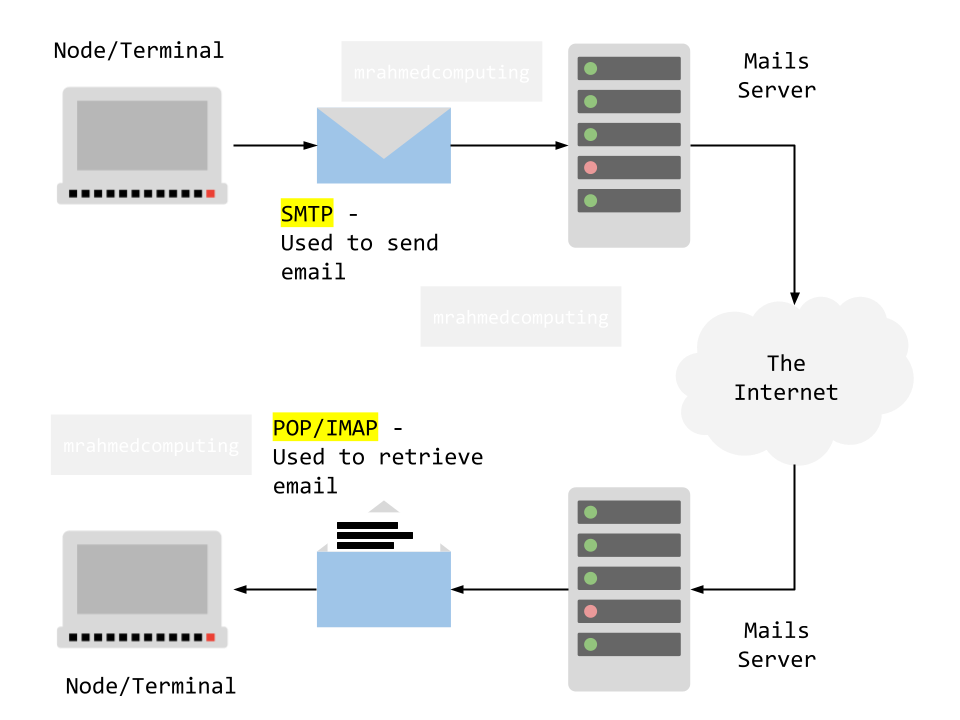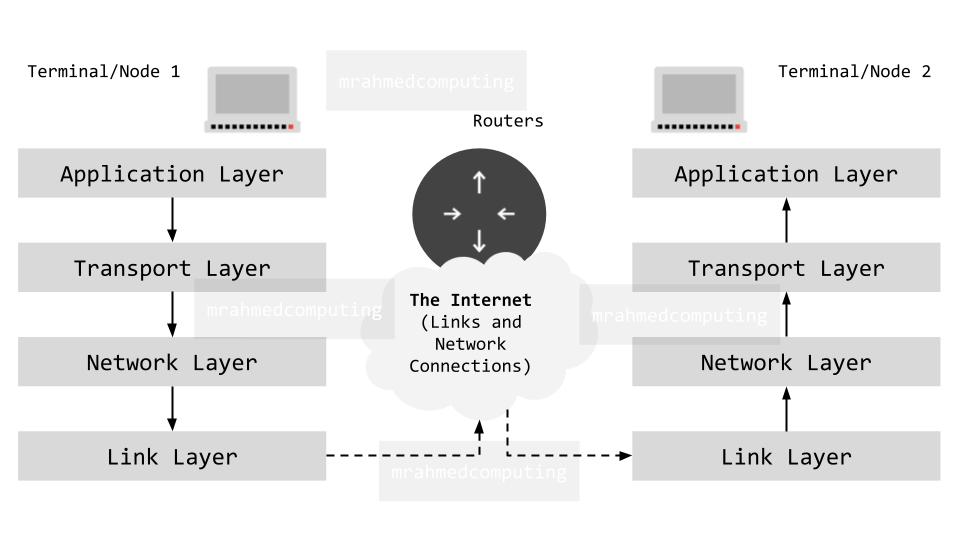Lesson Objective
- Identify some core protocols used to communicate data.
- Explain how the TCP/IP stack is used to send data over the Internet.
KS3, GCSE, A-Level Computing Resources
A network standard is set of agreed requirements for hardware and software. Standards are important as they allow manufacturers to create products and programs that will be compatible with products and programs from other manufacturers.
A protocol is a set of rules that allow computers to communicate over a network.
HTTP (hypertext transfer protocol) is used for accessing and receiving web pages in the form of HTML files on the Internet.
HTTPS (Hypertext Transfer Protocol Secure) is an extension of HTTP that works to protect communication between web servers and browsers when transporting data.
The key difference between these protocols lie in security. HTTP sends data in plain text, making it vulnerable to interception and tampering. HTTPS, on the other hand, secures connections using a digital security protocol that encrypts and validates data.
(File Transfer Protocol) is a standard network protocol used for transferring files between computers over a TCP-based network, such as the Internet. FTP operates on a client-server architecture. FTP users can authenticate themselves using a plain-text sign-in protocol (usually a username and password).

SMTP (Simple Mail Transfer Protocol): SMTP is responsible for sending emails from a client (like your email app) to a mail server. When you compose an email and click "send", SMTP handles the delivery process. It communicates with the recipient's mail server to relay the message.
IMAP (Internet Message Access Protocol): IMAP is an incoming mail protocol that allows you to access your email stored on a mail server. It keeps your email synchronized across multiple devices (phone, computer, tablet). IMAP downloads only email headers initially, improving efficiency. When you open an email, IMAP fetches the full content from the server.
POP (Post Office Protocol): It downloads entire emails from the server to your local device. Once downloaded, emails are removed from the server. POP is useful if you want to keep a local backup of your inbox. However, it's less suitable for managing emails across multiple devices.

TCP/IP (Transmission Control Protocol/Internet Protocol) is a fundamental framework for organizing communication protocols used on the Internet and similar computer networks.
TCP is one of the main protocols in the Internet protocol suite. It originated alongside the Internet Protocol (IP) during the early days of network implementation. Together, TCP and IP form the foundation of the suite, commonly referred to as TCP/IP. TCP ensures reliable, ordered, and error-checked delivery of a stream of data (octets or bytes) between applications running on hosts connected via an IP network.
IP handles addressing and routing of data packets across networks. It ensures that data reaches the correct destination based on IP addresses. IP is connectionless and operates independently of TCP.
The TCP/IP Stack, also known as the Internet Protocol Suite, is a fundamental framework for organizing communication protocols used on the Internet and similar computer networks.
The protocol stack defines four layers in which different protocols operate to pass data packets across a network. The four layers are divisions of network functionality, each carrying out different roles:

In summary, the TCP/IP model provides a structured way to understand how data flows across networks, from applications down to the physical hardware.
The application you are using to send data will determine the correct protocol to use to communicate.

Data packets move back up the layers to their destination application:
A layer is defined as a division of network functionality.
UDP (User Datagram Protocol) maintains an open data connection to send a continuous stream of packets without verifying if they are received correctly. It's most useful in scenarios where waiting to fill in gaps caused by lost packets doesn't make sense.